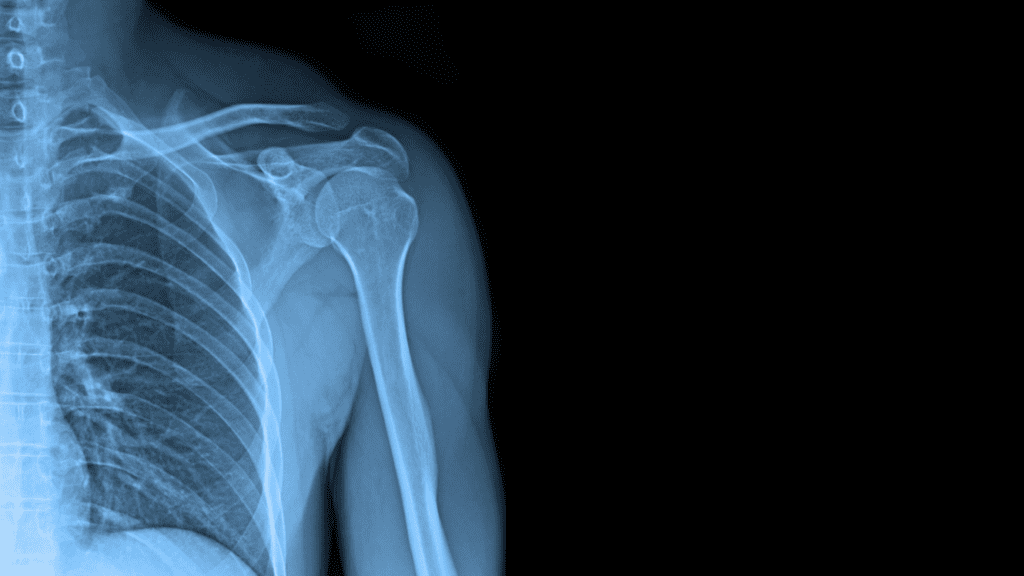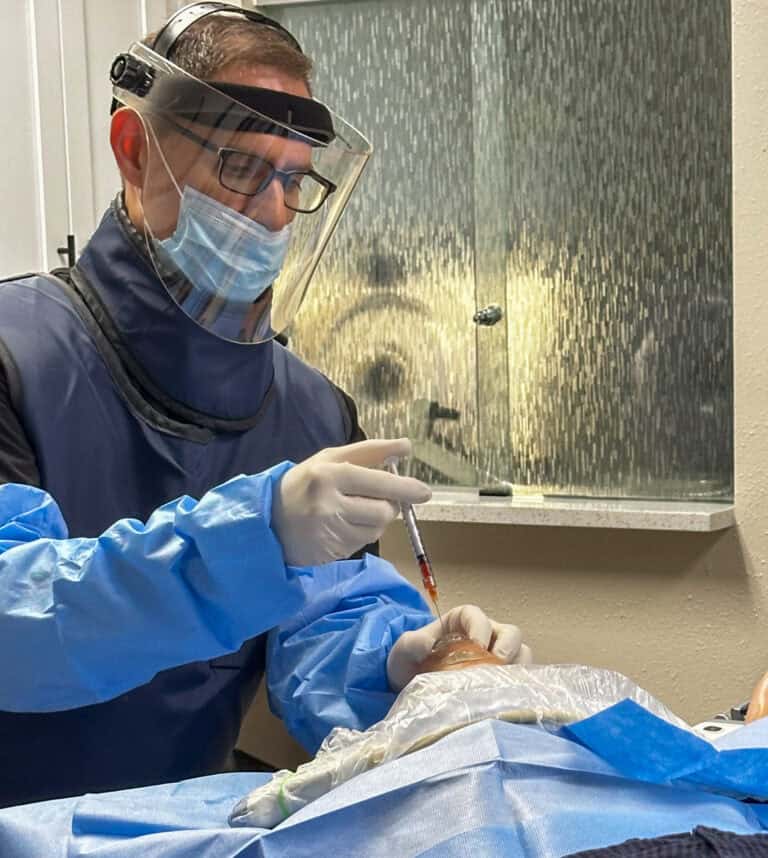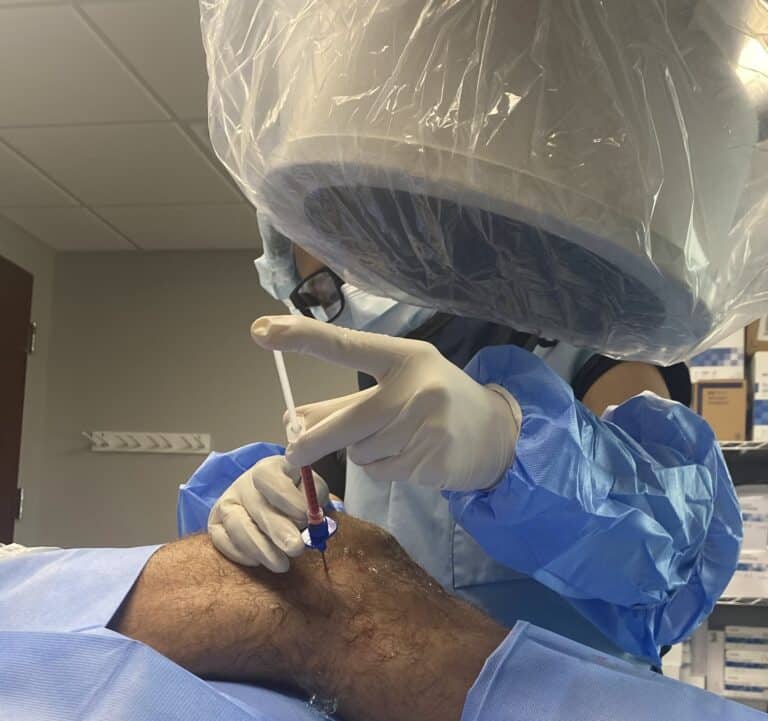Acromioplasty Defined
Acromioplasty is a surgical procedure that is designed to help alleviate pain that is present in the shoulder when a person moves their arm to the front or to the side. This type of pain is called shoulder impingement because it literally impinges some key structures in the shoulder complex. As seen in the image below, there is a bone that creates a “roof” over the very top of the shoulder, and is the meeting point for the end of the collar bone. This bone that creates the roof is called the acromion process and is a part of the shoulder blade. The two soft tissue structures that pass underneath the acromion are the bursa and the supraspinatus tendon, which is one of the tendons of the rotator cuff.
In shoulder impingement, some combination of inflammation, mechanics, and history of injury could lead to a narrowing of the space where tissues travel. Occasionally, the acromion itself becomes arthritic from repetitive aberrations to shoulder mechanics.
So, in the case of defining Acromioplasty, let’s look at the portions of the word:
- Acromio – which stands for the acromion process
- Plasty – a medical suffix which stands for the repair or restoration of a part or function by molding or shaping through a surgical procedure.
An Acromioplasty is a surgery where the doctor uses a device to shave down the bone to remove a part of the acromion process and theoretically make room for the rotator cuff muscle and bursa.
Who Would Consider Acromioplasty?
In the traditional orthopedic setting, patients who have chronic shoulder pain, meaning lasting more than six weeks, and having minimal relief with rehabilitation exercises and/or cortisone injections might be counseled to consider Acromioplasty. The conditions these patients may have could include any combination of:
- Bursitis
- Arthritis
- Bone spurs
- Rotator cuff injuries
Potential Problems with Acromioplasty
In general, in orthopedic medicine when we see alterations to the structure of the body, like shaving down a portion of a bone, there is often a domino effect of issues because changing the bone, changes the mechanics. So, although there may be some relief, there can be complications from the changed mechanics down the line. In fact, one study is a systematic review and meta-analysis of six randomized controlled trials evaluating the efficacy of Acromioplasty (1).
The study concluded that:
The results showed no significant differences between the two treatments [acromioplasty versus nonacromioplasty] in reoperation rate at the final follow-up or VAS score at 6 months postoperatively and final follow-up, but there was a significant difference in VAS score at 12 months postoperatively in favor of acromioplasty treatment (1).
Arbitrarily, it seems, the patients who received the acromioplasty noted improvement at the 12 month mark but not at 6 months post-op nor at their final evaluation. The result of this study is that this is not clinically significant data in favor of acromioplasty and suggest further studies are needed to assess the success-rate of Acromioplasty surgeries.
Alternatives to Acromioplasty Surgery
In the world of nonoperative orthopedics, shoulder impingement, bursitis, rotator cuff tears, and arthritis are all routine clinical findings that are treated with platelet rich plasma (PRP) or bone marrow concentrate (BMAC).
To get an idea of the success rate of shoulders treated with regenerative medicine at Regenexx, there are 2636 (and counting) cases of shoulder pain being tracked long-term in the Regenexx Patient Registry. In the registry data, the patients are surveyed at regular intervals about their perceived function improvements, pain level improvements, and overall improvements in their shoulders after a Regenexx procedure.
Prior to treatment, patients report being limited to an average of 65% of their optimal function. After receiving treatment, they report averages up to 87% (2).
Prior to receiving treatment, patients report average pain of 4.3/10. One month after treatment, pain levels decrease to an average of 2.8/10, a decrease of 35%.
Patients feel their joints are, on average, already 28% better after only 1-month, and continue to improve from there (2).
As evidenced by the Regenexx registry data, the procedures used to manage shoulder pain, like shoulder impingement are very successful at reducing pain and improving function over several years.
If your shoulder pain is keeping you from doing what you love, and you have tried other therapies and still aren’t getting the results you want, come and let us take a look at your case and see if regenerative medicine might be a great option for your goals.
References:
- https://www.ncbi.nlm.nih.gov/pmc/articles/PMC6237382/
- https://regenexx.com/results/
- https://www.mercy.com/health-care-services/orthopedics-sports-medicine-spine/specialties/shoulder-upper-arm/treatments/acromioplasty#:~:text=What%20is%20acromioplasty%3F,for%20your%20muscles%20to%20relax.
- Image Credit: Canva










